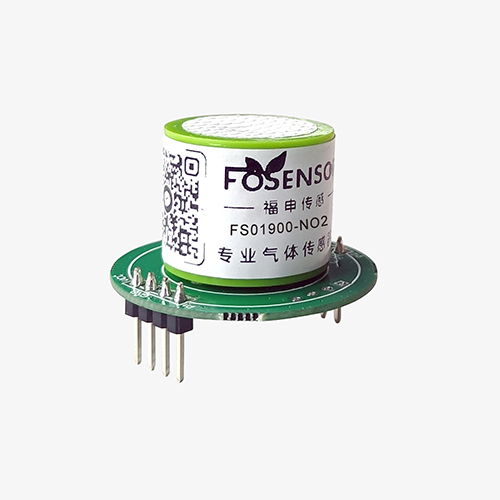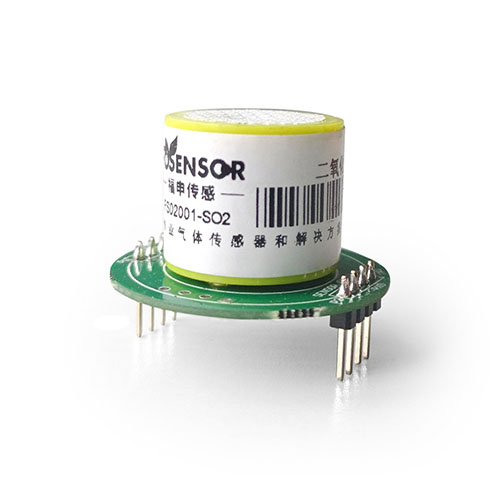What is a gas sensor?
Sensor technology is an important technical basis for the new technological revolution and information society, and it is an important link in realizing the automatic control of testing, which has penetrated into various fields of people’s life. With the increasing popularization and application of microcomputer and microelectronics technology, the performance, quantity and use of sensors have put forward new demands, prompting the development of new sensors to pay more attention.
A gas sensor is a device that converts certain information about a gas, including concentration and species, into acoustic, electrical, optical or digital information that can be utilized by operators, instrumentation, computers, etc. It is usually installed in a monitoring system within the probe head of the monitoring system for on-site collection of air data. The gas sensor converts the gas signal into an electrical signal, which is then transmitted to the microcontroller for data processing through serial communication. The gas sensor is the core of the gas monitoring system and plays a decisive role in the gas detection system.
From the working principle, characterization to the measurement technology, from the materials used to the manufacturing process, from the detection of the object to the field of application, can constitute an independent classification criteria, derived from a complex classification system, especially in the classification criteria of the problem has not been unified, to be strictly systematic classification is quite difficult. The next step is to understand the main characteristics of gas sensors:
Gas Sensor Characteristics
1.Stability
Stability is the stability of the basic response of the sensor throughout the operating time, depending on zero drift and interval drift. Zero drift is the change in the output response of the sensor throughout the operating time in the absence of the target gas. Interval drift is the change in the output response of a sensor continuously exposed to a target gas, as indicated by a decrease in the sensor output signal over the operating time. Ideally, a sensor should have a zero drift of less than 10% per year under continuous operating conditions.
2.Sensitivity
Sensitivity is the ratio of the change in the output of a sensor to the change in the measured input, and is largely dependent on the technology used in the construction of the sensor. Most gas sensors are designed using biochemical, electrochemical, physical and optical principles. The first consideration is to select a sensitive technology that is sufficiently sensitive to detect a percentage of the target gas’s threshold limit (TLV-thresh-oldlimitvalue) or lowest explosive limit (LEL-lowerexplosivelimit).
3.Selectivity
Selectivity is also known as cross-sensitivity. It can be determined by measuring the response of the sensor produced by a certain concentration of the interfering gas. This response is equivalent to the sensor response produced by a certain concentration of the target gas. This characteristic is important in applications where multiple gases are being tracked because cross sensitivity reduces the repeatability and reliability of the measurement and the ideal sensor should have high sensitivity and high selectivity.
4.Corrosion resistance
Corrosion resistance is the ability of the sensor to be exposed to high volume fractions of the target gas. In the case of large gas leakage, the probe should be able to withstand the desired gas volume fraction 10 to 20 times. On return to normal operating conditions, sensor drift and zero calibration values should be as small as possible. The basic characteristics of a gas sensor, i.e., sensitivity, selectivity, and stability, are determined primarily by the choice of materials. Selection of appropriate materials and development of new materials optimize the sensitive characteristics of gas sensors.
Classification of Gas Sensors
According to the working principle, gas sensors are classified into three categories: physical, chemical and biological types. According to the gas-sensitive properties of the gas sensor can be divided into semiconductor type, solid electrolyte type, electrochemical type, contact combustion type, optical type and thermal conductivity type, etc., mainly using the physical effect, chemical effect and other mechanisms into the production, in addition to the acoustic surface wave type and fiber-optic type and other new types of gas sensors, as well as micro-system (micro-electro-mechanicalsystem) MEMS gas sensor, and integration, intelligence and image of the combination of new specialized gas sensors
1.Semiconductor gas sensor semiconductor gas sensors are widely used, simple and easy to use, in the household gas detection, intelligent home appliances and other areas of application, is currently the most widely used varieties of gas sensors;
2 electrochemical gas sensor electrochemical gas sensor is very suitable for low concentration of toxic gas detection, as well as oxygen and alcohol and other non-toxic gas detection, is currently mainly used in a variety of industrial fields as well as road traffic safety detection field;
3Catalytic combustion gas sensorCatalytic combustion gas sensor is suitable for combustible gas detection, mainly used in the field of coal mine gas detection;
4Infrared gas sensor
Infrared gas sensors are suitable for detecting methane, carbon dioxide and other gases, in the current practical application of carbon dioxide products used in the majority of applications, a wider range, mainly used in HVAC and indoor air quality monitoring, industrial processes and safety and security monitoring, agriculture and animal husbandry production process monitoring and other fields.
People’s daily life and production activities, as well as the growth process of plants and animals are closely related to the changes in the surrounding environment. If the lack of oxygen in the air will make people feel suffocated, the air contains toxic gases will bring more harm; if there is a leakage of combustible gases will cause explosions and fires. In all kinds of enterprises, especially petrochemical, coal mining, automotive and other enterprises, the use of gas raw materials and the number and types of gases produced are increasing. Therefore, high-performance gas sensors have become the focus and hotspot of research at home and abroad in recent years.
Environmental issues have been one of the most concerned topics throughout the country and the world, the environment on which mankind depends has been suffering serious damage, how to protect the environment requires the establishment of an environmental regulatory mechanism, the construction of the Internet of Things has become necessary, and gas sensors as the necessary sensors for environmental detection will help to build the Internet of Things for the environment.
Sensors are the most core and basic aspects of the Internet of Things, is a variety of information and artificial intelligence bridge, one of the important categories in its technical field of gas sensors, spanning functional materials, electronic ceramics, optoelectronic components, MEMS technology, nanotechnology, organic polymers, and other many basic and applied disciplines. High-performance gas sensors can greatly improve the level of information acquisition, processing, deep processing, improve the accuracy of real-time prediction of accidents, and constantly eliminate hidden accidents, significantly reducing the occurrence of accidents, especially major accidents. It can effectively realize the electronic supervision and management of safety inspection and production safety, change the passive disaster relief into active disaster prevention, and make the production safety to scientific management.
How to choose a gas sensor?
There are hundreds of types of gas sensors, for different gas sensors may have different selection techniques, the user in the selection of gas sensors if they are not very clear you can consult the sensor manufacturer’s technical staff, so that they choose the right gas sensor for you.









